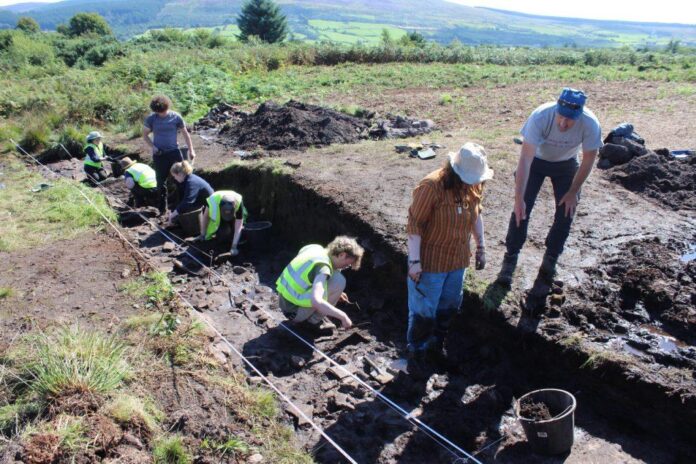An ancient Neolithic structure known as a cursus, believed to be the only complete such monument found in Britain, has been discovered on Scotland’s Isle of Arran.
A team of archaeologists, led by researchers from the University of Glasgow and including scientists from more than half a dozen other institutions, began excavation of the massive monument in August with the help of local volunteers.
Cursus monuments are narrow, rectangular earthwork enclosures, akin to trenches, built by farmers in Neolithic Britain and Ireland that measure miles long and date from about 4000 to 2500 B.C.E.
“The work we are doing at Drumadoon is about much more than understanding how people were living and farming 5,000 years ago, and goes far beyond the ceremonial cursus monument. The results of our excavations and sample analysis are also relevant to the current management of this landscape during a time of climate change,” Brophy said in emailed comments to Artnet News.
“Prehistoric farmers were used to adapting to change and farmed in challenging landscapes, and in this project we want to learn more about their farming resilience and sustainability. This is going to help with farming and rewilding Drumadoon in the coming decades where wetter weather and higher sea levels will become the new reality.”
The monument in Arran measures a little less than three-quarters of a mile long and about 164 feet wide, and is believed to date back to as early as 3500 B.C.E., the University of Glasgow said in a news release.
“The cursus on Arran is defined by a large stone, earth, and turf bank running around the entire perimeter of the enclosure,” the researchers said. “Constructing this monument would have involved staggering amounts of labor, transforming the entire local landscape.”
Because of the size of the ancient Neolithic cursus, the monument could have either been built over decades by a smaller team or more quickly by a larger team of traveling workers, Brophy believes.

Dr. Darko Maričević carries out the geophysical survey of the cursus monument terminal area. Photo courtesy of Kenny Brophy

Excavation of the main trench across the cursus monument bank. Photo courtesy of Kenny Brophy

Drawing the excavated area to scale at the base of the cursus bank is pictured during planning. Photo courtesy of Kenny Brophy
Prehistoric field boundaries, clearance cairns, and round houses, which may have been built around the same time as the cursus, have also been found preserved in the peatland at the site, a “highly unusual” occurrence that will help researchers.
The discoveries will further allow researchers to investigate how the farmers of the time used the land and past ecosystems that existed on it. Researchers also hope to understand how contemporary farming and human settlement have affected the cursus.
“The initial discoveries reveal a highly unusual combination of a ceremonial monument within a prehistoric farming landscape,” said Nicki Whitehouse, who led the landscape prospection, geoarchaeology, and environmental science work. “It is part of a continuum that likely linked to the ritual site at Machrie Moor, probably forming part of something much more extensive.”
Brophy, in comments to , added that the cursus is “strategically located” to point people from the southwest coast of the island to the interior to showcase Machrie Moor.
Emma Jenkins of Bournemouth University, who co-led the landscape geoarchaeology and environmental science work, said the researchers are “particularly excited” about the discovery of well-preserved soil from the same time as the creation of the cursus. They will be using technology to investigate sedimentary ancient DNA, marking one of the first sedaDNA applications to a cursus monument.
Beyond the University of Glasgow, the team included researchers from the universities Birkbeck, Bournemouth, Reading, Coventry, Birmingham, and Southampton as well as archaeologists from Archaeology Scotland and Historic Environment Scotland.
More Trending Stories:

























